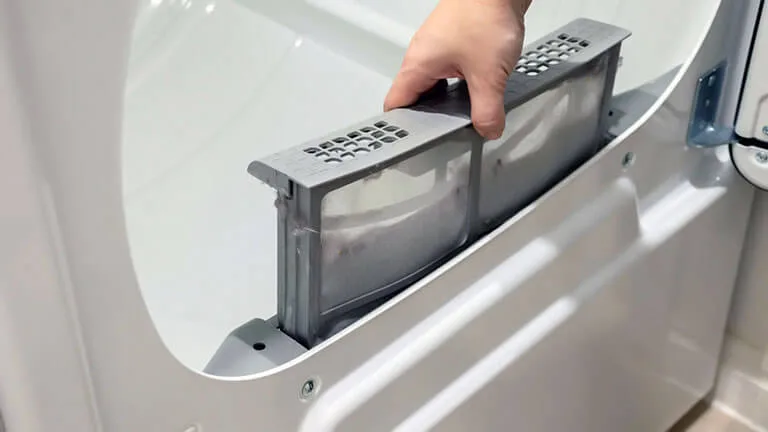A GE dryer that isn't heating can be frustrating. It disrupts your laundry routine.When your GE dryer stops heating, it’s a sign of trouble. You might be wondering why this happens and how to fix it. This issue can be due to several reasons. It could be a faulty thermostat, a broken heating element, or even a simple power issue.
Understanding these common problems can help you diagnose and possibly fix the issue yourself. In this blog post, we will explore the possible causes of a GE dryer not heating. We will also provide easy-to-follow steps to get your dryer back to working condition. So, let’s dive in and solve this problem together!
Common Causes
If your GE dryer is not heating, it can be quite frustrating. Understanding the common causes can help you troubleshoot and fix the issue. Here are some typical reasons why your GE dryer might not be heating.
Power Issues
One of the most common causes is a power issue. Ensure the dryer is plugged in properly. Check the circuit breaker or fuse box. Sometimes, the dryer may be on a separate circuit that has tripped or blown a fuse.
Use a multimeter to check the voltage at the outlet. The dryer needs 240 volts to function correctly. If the outlet is providing less, the dryer will not heat up properly.
Thermal Fuse
A faulty thermal fuse can also cause heating problems. The thermal fuse is a safety device that prevents the dryer from overheating. If it blows, it will need to be replaced.
Here is how you can check the thermal fuse:
- Unplug the dryer to ensure safety.
- Locate the thermal fuse. It is usually found on the blower housing or near the heating element.
- Use a multimeter to test the fuse for continuity. If the fuse has no continuity, it is blown and needs replacement.
Replacing the thermal fuse is a simple task. You can order a replacement online or from a local appliance parts store.
Read: Kenmore Coldspot Ice Dispenser Not Working
Checking Power Supply
Experiencing issues with your GE dryer not heating? One common cause is a power supply problem. Checking the power supply can help diagnose the issue. This step ensures your dryer receives adequate power to function properly.
Circuit Breaker
First, inspect the circuit breaker. Locate your home’s electrical panel. Identify the switch controlling the dryer’s power. Ensure it is in the “on” position. If it has tripped, reset it by turning it off and then back on. A tripped breaker can prevent your dryer from heating.
Outlet Testing
Next, test the outlet. Unplug the dryer. Plug a different device into the same outlet. Check if the device works. If it does not, the outlet might be faulty. Consider using a multimeter to test the voltage. It should read around 240 volts for proper dryer operation.
Inspecting The Thermal Fuse
When your GE dryer is not heating, the thermal fuse might be the problem. This safety device prevents the dryer from overheating. If it blows, it stops the dryer from producing heat. Let’s learn how to inspect it.
Locating The Fuse
The thermal fuse is inside the dryer. To find it, you need to access the back panel. Follow these steps:
- Unplug the dryer from the power source.
- Move the dryer away from the wall.
- Remove the screws holding the back panel.
- Look for the thermal fuse. It is usually white or silver.
Use a flashlight if necessary. Make sure you find the correct component.
Testing The Fuse
Once you locate the thermal fuse, you need to test it. This will tell you if it needs replacement. Here’s how:
- Set a multimeter to the continuity setting.
- Touch the probes to the fuse terminals.
- If the multimeter beeps or shows a reading, the fuse is good.
- If there is no beep or reading, the fuse is blown.
If the fuse is blown, replace it. This should help your dryer heat up again. Remember to reassemble the dryer properly.
| Step | Action |
|---|---|
| 1 | Unplug the dryer |
| 2 | Move dryer from the wall |
| 3 | Remove back panel screws |
| 4 | Locate thermal fuse |
| 5 | Test with multimeter |
| 6 | Replace if blown |
Heating Element Problems
Dealing with a GE dryer that isn’t heating can be frustrating. One common cause is problems with the heating element. This crucial part generates the heat needed to dry your clothes. If your dryer isn’t getting hot, the heating element might be at fault.
Signs Of Failure
Recognizing the signs of a failing heating element can save you a lot of trouble. Here are some common symptoms:
- Your dryer runs, but clothes stay wet.
- You notice a burning smell while the dryer operates.
- The dryer takes too long to dry clothes.
- No heat is produced, even on the highest settings.
Replacement Steps
Replacing the heating element isn’t overly complicated. Follow these steps to get your dryer back in working order:
- Unplug the dryer: Always ensure safety first.
- Remove the back panel: Use a screwdriver to access the heating element.
- Disconnect the wires: Take a photo to remember the wire locations.
- Remove the old heating element: Unscrew it and carefully take it out.
- Install the new heating element: Screw it in place and reconnect the wires.
- Reattach the back panel: Secure it with screws.
- Plug in the dryer: Test to ensure it heats up properly.
Following these steps can help you replace the heating element and get your dryer heating again.
Thermostat Malfunctions
Thermostat malfunctions can be a common reason for a GE dryer not heating. The thermostat regulates the temperature inside the dryer. If it fails, the dryer may not heat up as needed. Understanding how to identify and test thermostat issues can help solve the problem quickly.
Identifying Symptoms
One symptom of a faulty thermostat is the dryer running but no heat. Clothes may remain damp and cold after a full cycle. You might also notice the dryer overheating or shutting off unexpectedly. These signs point to thermostat issues.
Testing The Thermostat
Start by unplugging the dryer for safety. Locate the thermostat, usually found behind the back panel. Use a multimeter to test it. Set the multimeter to the lowest ohms setting. Touch the probes to the thermostat terminals. A reading of zero or near zero indicates the thermostat is fine. If the reading is very high or infinite, the thermostat is faulty. Replace it to restore proper heating.
Timer And Control Board Issues
Having trouble with your GE dryer not heating? Timer and control board issues might be the cause. These components control the heating element. If they malfunction, your dryer won’t heat properly. Understanding common faults and repair options can help you fix the problem.
Common Faults
The timer controls the heating cycles. If it fails, the dryer won’t heat. A faulty control board can also lead to heating issues. It may send incorrect signals to the heating element. This results in the dryer not producing heat.
Repair Options
Inspect the timer for any damage. Replace it if necessary. Check the control board for burnt components. A technician can test it for faults. Replacing a faulty control board might be needed. Always use genuine parts for repairs.
Ge Dryer Not Heating? [Here is the Lint And Vent Blockages]

Is your GE dryer not heating as expected? The issue might be due to lint and vent blockages. These blockages can prevent hot air from circulating properly, leading to inefficient drying. Let’s explore how to tackle this problem by focusing on two key areas: the lint trap and the vent path.
Cleaning The Lint Trap
The lint trap collects lint and debris from clothes during drying. A clogged lint trap can restrict airflow, causing your dryer to overheat and fail to dry clothes efficiently.
- Locate the lint trap, usually found on the top or inside the door.
- Remove the lint screen carefully.
- Use your fingers to remove lint from the screen.
- Rinse the lint screen with warm water and mild soap.
- Dry the screen completely before placing it back in the dryer.
Regularly cleaning the lint trap ensures optimal airflow and prevents overheating.
Checking The Vent Path
The vent path carries hot air from the dryer to the outside. If the vent is blocked, the dryer can overheat and stop heating properly.
- Unplug the dryer from the power source.
- Move the dryer away from the wall to access the vent.
- Disconnect the vent hose from the dryer.
- Inspect the vent hose for lint buildup.
- Use a vacuum or a long brush to clean inside the vent hose.
- Check the external vent outside your home for blockages.
- Reattach the vent hose and move the dryer back into place.
Ensuring the vent path is clear can improve dryer performance and prevent overheating.
Preventive Maintenance
Regular preventive maintenance can keep your GE dryer heating efficiently. Clean the lint filter and check the vent for blockages. Inspect heating elements for wear and tear.
Preventive maintenance for your GE dryer can save you time and money. It helps avoid unexpected issues and prolongs the dryer’s lifespan. Regular upkeep ensures your dryer works efficiently and heats properly. Here are some essential tips for preventive maintenance.
Regular Cleaning Tips
Clean the lint filter after every load. A clogged filter restricts airflow, causing heating issues. Wipe down the dryer drum to remove any residue. Use a damp cloth and mild detergent. Vacuum around the dryer, especially the back. Dust can accumulate and affect performance.
Routine Inspections
Check the vent hose for blockages. A blocked vent can cause the dryer to overheat. Inspect the power cord and plug for damage. A damaged cord can lead to electrical issues. Examine the drum seals for wear and tear. Worn seals can cause heat loss.
Regular maintenance keeps your GE dryer in top shape. It ensures your clothes dry efficiently every time.
“`
Frequently Asked Questions
Why Is My Ge Dryer Not Heating Up?
There could be a faulty heating element, blown thermal fuse, or an issue with the thermostat.
How Do I Reset My Ge Dryer?
Unplug the dryer, wait for a few minutes, then plug it back in.
Can A Clogged Vent Cause A Dryer To Not Heat?
Yes, a clogged vent can restrict airflow and prevent proper heating.
How Can I Check If My Dryer’s Heating Element Is Broken?
Use a multimeter to test the heating element for continuity. No continuity means it’s broken.
What Should I Do If My Dryer Thermal Fuse Is Blown?
Replace the thermal fuse. It’s a safety device and cannot be reset.
Conclusion
Regular maintenance keeps your GE dryer in good condition. Addressing heating problems early saves money and stress. Check the common issues mentioned and fix them as soon as possible. If problems persist, consider professional help. Keeping your dryer in top shape ensures it works well for years.
Happy drying!
